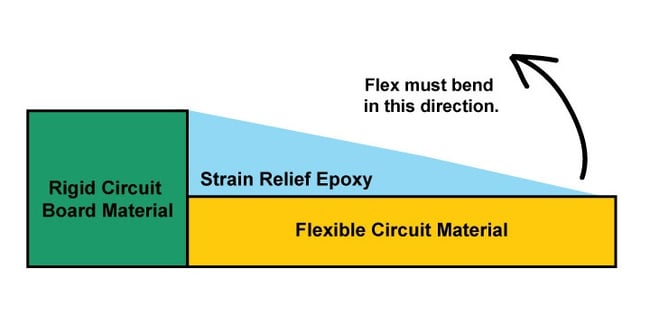Time:2022-03-12Views:
For rigid-flex printed circuit boards (PCBs), the space (transition area) that connects the hard material to the flex material sometimes contains imperfections that, while acceptable, can affect the effectiveness of the final part. Transition zone defects can include any of the following:
a. Adhesive Extrusion
b. Protruding Dielectric Materials
c. Cracked
d. Halo
If the part is bent at the interface, the remaining cured resin can damage the underlying flexible laminate. To protect the underlying flex laminate, flex PCB designers need to use stress relief epoxy in the flex transition area. The applied cured epoxy will help expand the flex area beyond the remaining cured resin.
This stress relief epoxy can be controlled to be rigid or flexible depending on the requirements of the final product. It is important to note that when designing for stress relief in rigid flex PCB designs, please refer to IPC-2223 Section 5.2.9 for complete guidelines and limitations.

Conclusion
The transition zone is a very sensitive area of the printed circuit board and must be constructed with great care. Even the slightest miscalculation can lead to errors that affect the performance of the PCBs.

